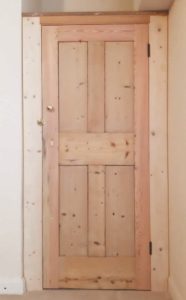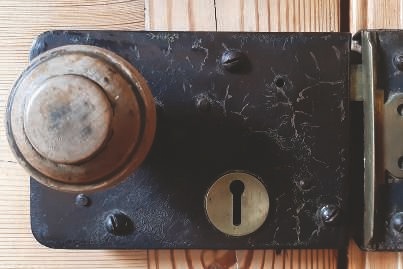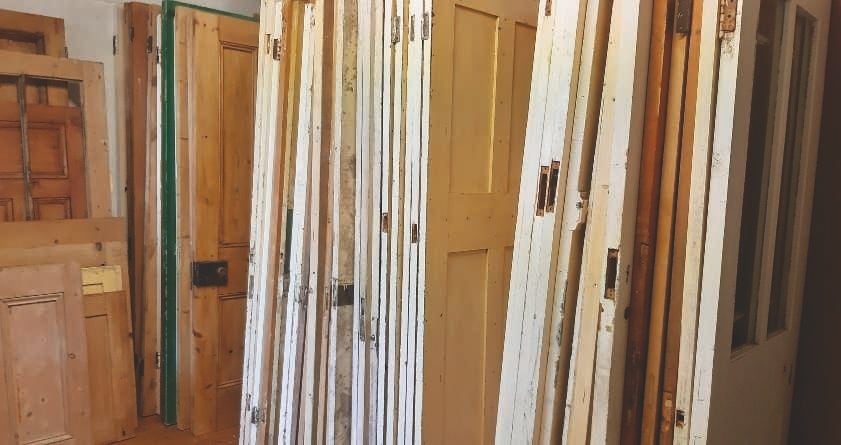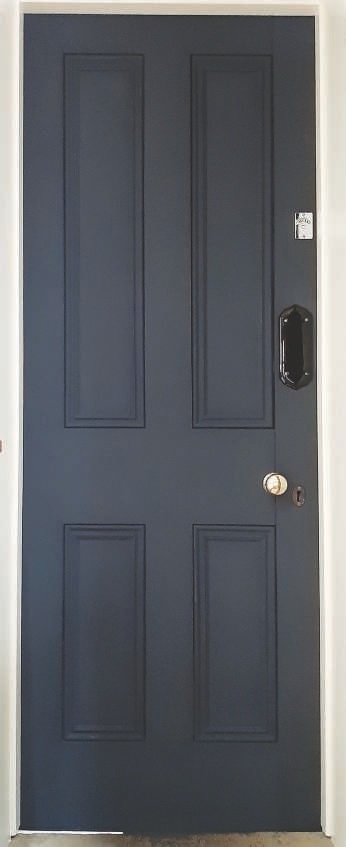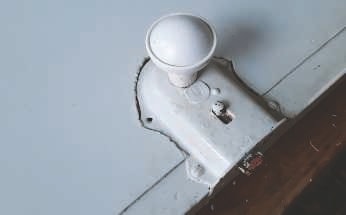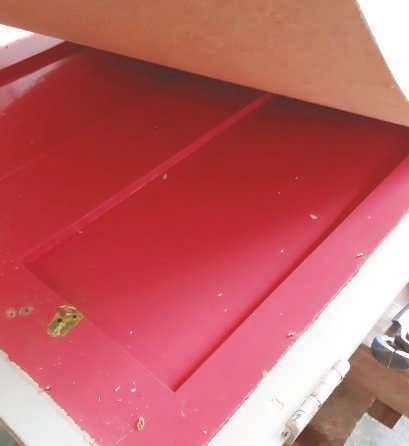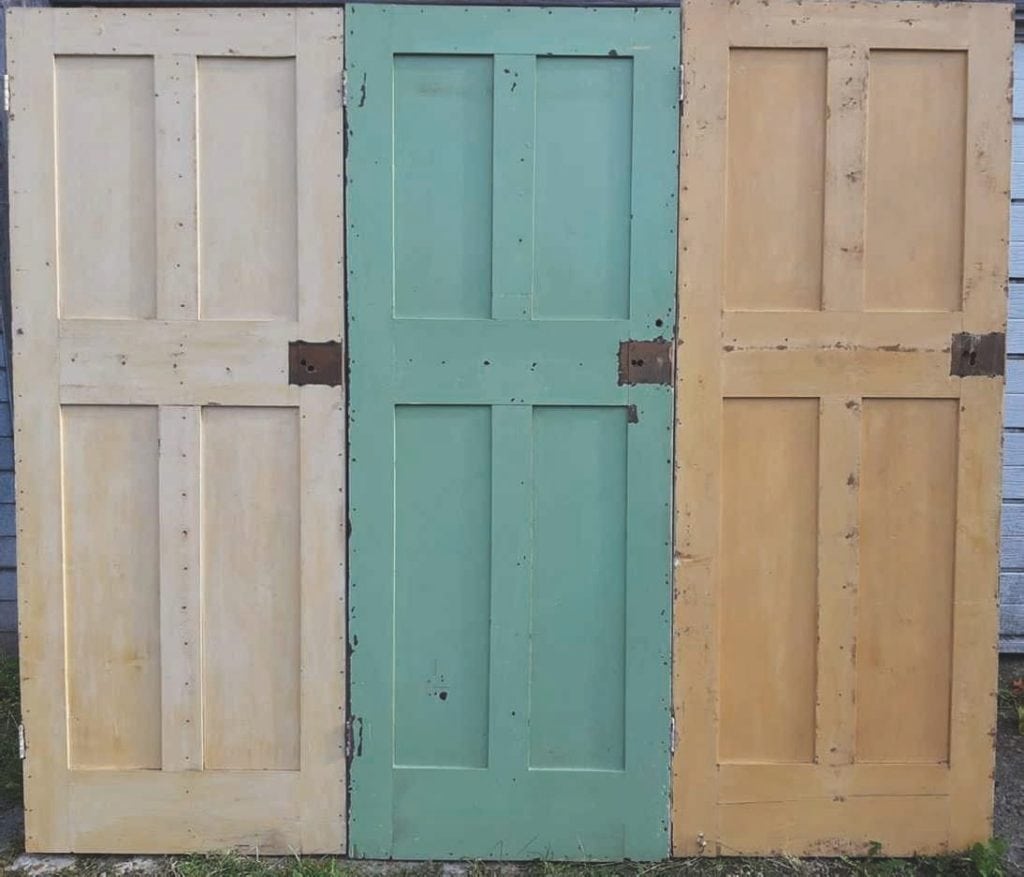Je t’a-door… The Old Door Restorer
We talk to Tony Bones of Bones Traditional Woodwork about his passion for salvaging and restoring old doors and door furniture.
Regular readers may remember that in our autumn issue we ran an article on choosing the right doors for your period property, stressing the importance of matching the right style of door to the era of the property from the baffling choice available to ensure an authentic period feel.
As a result of reading this, someone came out of the ‘woodwork’ (we mean that in a nice way). This is someone who has a lot more to offer on the subject, so as a follow-up we’d like to introduce you to Tony of Bones Traditional Woodwork, aka the Old Door Restorer.
A friend of Tony’s father had a woodcraft shop and as a child, Tony spent a lot of time with his dad in a woodworking environment and even had his own toolkit at the age of three! There was never much doubt that he would follow in his Dad’s footsteps and since leaving school he’s been happily working professionally with wood for over 40 years.
Always interested in heritage, he decided around four years ago he wanted to concentrate more on restoring sash windows and period doors. However, he noticed there was plenty of competition in the sash window business but very few period door restorers. From there he has ‘carved out his niche’, finding something that sits well with his love of our historic built environment and his personal ethos to repair, reuse, restore and recycle, which is a passion of his that has developed over the years into almost an obsession.
He explains there are two strands to his period doors service. In an ideal world, the doors made at the time when the property was built will still be there and Tony has all the necessary skills and know-how to repair, restore and make them fully functioning again.
If the originals aren’t there, however, he has built up a collection of period doors that he can ‘re-home’. The collection has grown with him over the years; he’s not averse to liberating them from skips and is always on the lookout for a salvage opportunity. The vast majority of these doors are Victorian four-panels, along with some Edwardian, 1930s and Georgian doors.
He spotted the dark grey Victorian four-panel, pictured here, in a front garden. It was painted sky blue and the owners were happy to have it removed. Now fully restored and fitted properly with vintage restored door furniture: brass knobs, black glazed ceramic fingerplate and the chrome indicator bolt, it is now a perfect bathroom door. The effect is superb.
Tony explains further that there’s no such thing as a standard size door in period properties, as they would have been made bespoke to fit perfectly when the house was built. When a client says, ‘I need new doors’, it’s always best to look closely at what is there to check that is the case. Many times he has found that the ugly doors someone wants changing are in fact the original ones that have been masked or altered in some way. Hardboard was frequently used in the 60s and 70s to convert panelled doors into flush ‘trendy’ looking ones to fit with the fashions of the time. He has often asked a client for permission to peel off the hardboard to reveal a perfect period door underneath that can then be restored. The photos here show the process of peeling back the hardboard, and the shocking pink one is the original door beneath ready to be restored and made beautiful again.
Something that adds to the aesthetic appeal of a period door restoration is of course the door furniture. Fitting the appropriate hinges, rim lock, knob and fingerplate lend authenticity. Tony’s passion for old doors is equalled by his love of vintage fittings. His attention to detail has meant he has built up a wonderful collection of these, which he has lovingly restored to reuse. He says that the majority of cast iron hinges were made by Baldwin in their foundry in Stourport; an interesting fact: three times Prime Minister Stanley Baldwin began working in this family business. Cast iron hinges are usually covered in paint, which prevents them from working properly. He removes the paint and gets them looking good and working well again.
The same care and attention is lavished on many different types of fittings including rim locks, which are mounted on the surface of the door and were common in the 19th to mid 20th century. Pictured here is a particularly interesting one with the maker’s name on the little brass badge. Pryke and Palmer were ironmongers in Upper Thames St, London. (No.48 is now a Shepherd Neame pub).
In line with Tony’s desire to reuse original items, he tries his utmost to never discard parts that may come in useful. Some doors he acquires are beyond repair – they may have been cut down too much or had several different locks fitted, but some of their parts can be salvaged and reused. He calls them ‘donor doors’, and he can make one door out of two or more damaged ones.
Having the vision to recognise the potential in what most people would see as waste and to make something useful and beautiful again is what qualifies him as the Old Door Restorer.
Find out more about Tony Bones and his work at boneskent.co.uk
Posted in: Interiors
